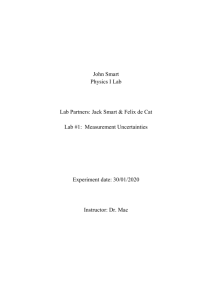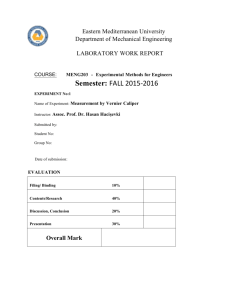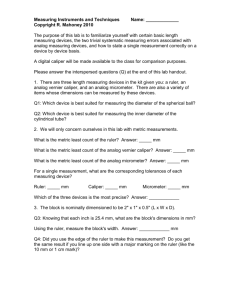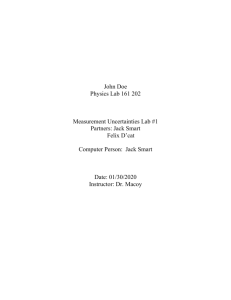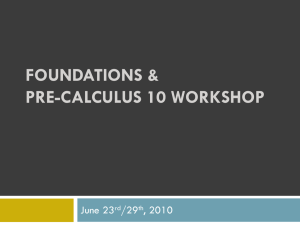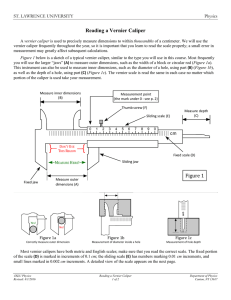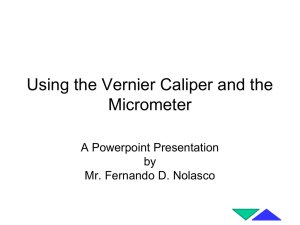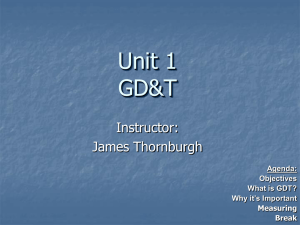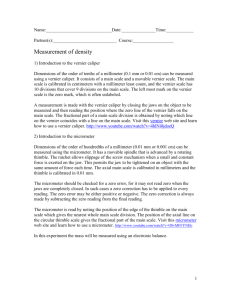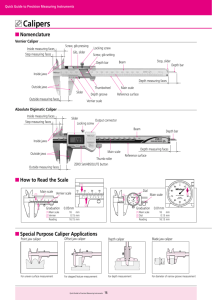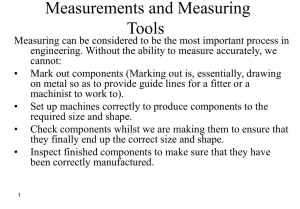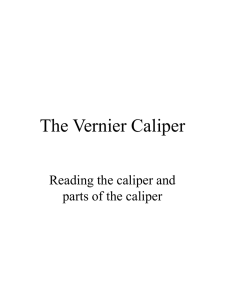Determination of Pi
advertisement
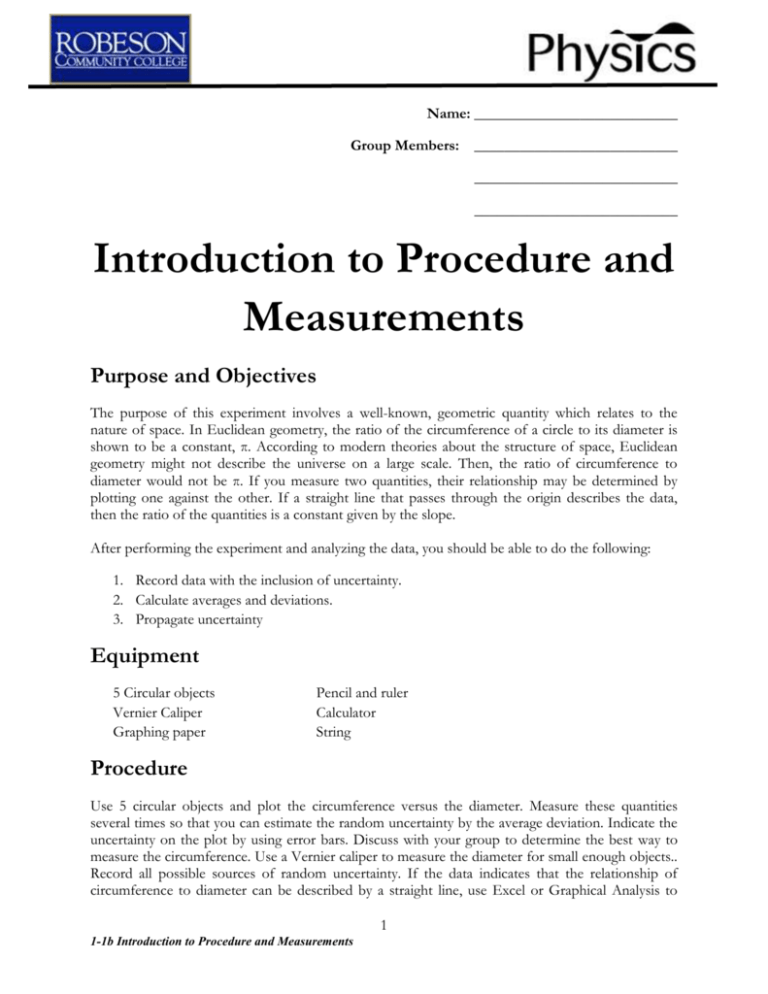
Name: ___________________________ Group Members: ___________________________ ___________________________ ___________________________ Introduction to Procedure and Measurements Purpose and Objectives The purpose of this experiment involves a well-known, geometric quantity which relates to the nature of space. In Euclidean geometry, the ratio of the circumference of a circle to its diameter is shown to be a constant, π. According to modern theories about the structure of space, Euclidean geometry might not describe the universe on a large scale. Then, the ratio of circumference to diameter would not be π. If you measure two quantities, their relationship may be determined by plotting one against the other. If a straight line that passes through the origin describes the data, then the ratio of the quantities is a constant given by the slope. After performing the experiment and analyzing the data, you should be able to do the following: 1. Record data with the inclusion of uncertainty. 2. Calculate averages and deviations. 3. Propagate uncertainty Equipment 5 Circular objects Vernier Caliper Graphing paper Pencil and ruler Calculator String Procedure Use 5 circular objects and plot the circumference versus the diameter. Measure these quantities several times so that you can estimate the random uncertainty by the average deviation. Indicate the uncertainty on the plot by using error bars. Discuss with your group to determine the best way to measure the circumference. Use a Vernier caliper to measure the diameter for small enough objects.. Record all possible sources of random uncertainty. If the data indicates that the relationship of circumference to diameter can be described by a straight line, use Excel or Graphical Analysis to 1 1-1b Introduction to Procedure and Measurements determine the equation of the best-fit straight line to the data, along with uncertainties on the slope and intercept. An ordinary vernier caliper has jaws you can place around an object, and on the other side jaws made to fit inside an object. These secondary jaws are for measuring the inside diameter of an object. Also, a stiff bar extends from the caliper as you open it that can be used to measure depth. The basic steps are as follows: 1. Preparation to take the measurement, loosen the locking screw and move the slider to check if the vernier scale works properly. Before measuring, do make sure the caliper reads 0 when fully closed. If the reading is not 0, adjust the caliper’s jaws until you get a 0 reading. If you can’t adjust the caliper, you will have to remember to add to subtract the correct offset from your final reading. Clean the measuring surfaces of the vernier caliper and the object, then you can take the measurement. 2. Close the jaws lightly on the item which you want to measure. If you are measuring something round, make sure you are measuring the full diameter. An ordinary caliper has jaws you can place around an object, and on the other side jaws made to fit inside an object. These secondary jaws are for measuring the inside diameter of an object. Also, a stiff bar extends from the caliper as you open it that can be used to measure depth. How to Read a Vernier Caliper Figure 1 Read the centimeter mark on the fixed scale to the left of the 0-mark on the vernier scale. (10mm on the fixed caliper) Figure 2 Find the millimeter mark on the fixed scale that is just to the left of the 0-mark on the vernier scale. (6mm on the fixed caliper) 2 1-1b Introduction to Procedure and Measurements Figure 3 Look along the ten marks on the vernier scale and the millimeter marks on the adjacent fixed scale, until you find the two that most nearly line up. (0.25mm on the vernier scale) Figure 4 To get the correct reading, simply add this found digit to your previous reading. (10mm + 6mm + 0.25mm= 16.25 mm) Information and pictures from http://www.tresnainstrument.com/how_to_read_a_vernier_caliper.html Questions 1. What is the relationship between circumference and diameter? 2. Is a straight line a good fit to the data points? Explain. (The words “error bars” should occur in your explanation.) 3. Does the value of the slope make sense? the intercept? 4. Based on the results from your experiment, what do you predict the diameter of the earth to be (along with uncertainty) from the know circumference of 24,902 miles? 5. Is Euclidean geometry valid for the objects used in the experiment? 3 1-1b Introduction to Procedure and Measurements
